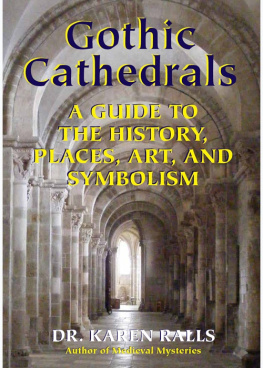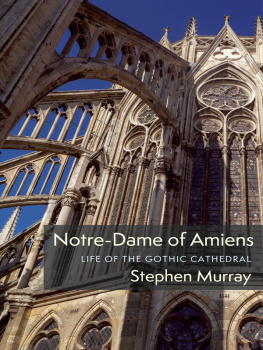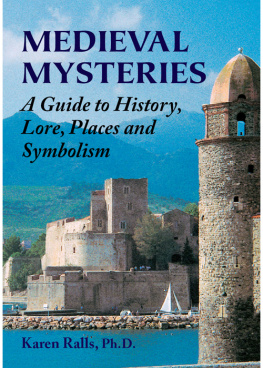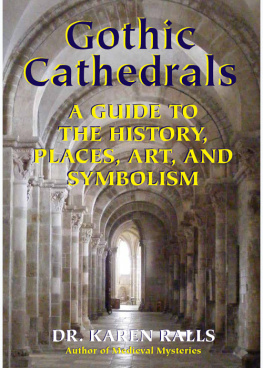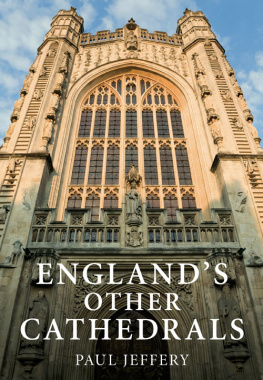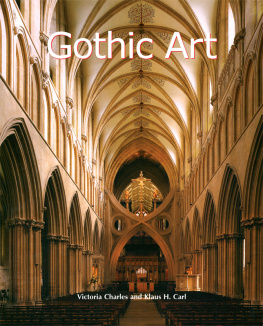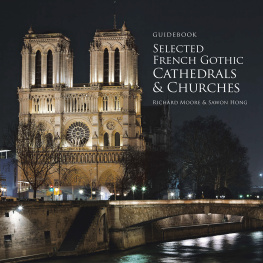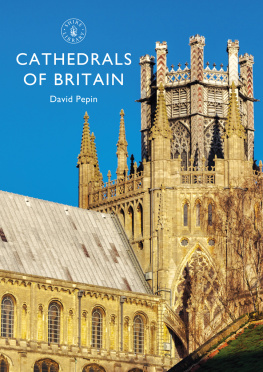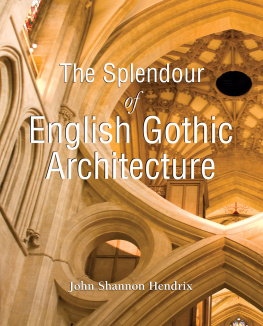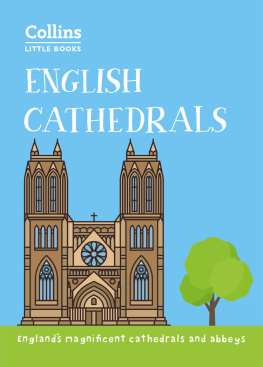

Published in 2015 by Ibis Press
An imprint of Nicolas-Hays, Inc.
P. O. Box 540206
Lake Worth, FL 33454-0206
www.ibispress.net
Distributed to the trade by
Red Wheel/Weiser, LLC
65 Parker St. Ste. 7
Newburyport, MA 01950
www.redwheelweiser.com
Copyright 2015 by Karen Ralls
All rights reserved. No part of this publication may be reproduced or transmitted in any form or by any means, electronic or mechanical, including photocopying, recording, or by any information storage and retrieval system, without permission in writing from Nicolas-Hays, Inc. Reviewers may quote brief passages.
ISBN: 978-089254-173-7
Ebook ISBN: 978-0-89254-627-5
Library of Congress Cataloging-in-Publication Data
Available upon request.
Book design and production by Studio 31.
www.studio31.com
The abbreviation WMC in photo credits refers to Wikimedia Commons. Frontispiece God, the Grand Architect, creating the world with the principles of Geometry. From Bible Moralisee, 12201230. Great Paintings from Medieval Illuminated Books, Dover Publications.
Printed in China
www.redwheelweiser.com
www.redwheelweiser.com/newsletter
TABLE OF CONTENTS
PREFACE
L et there be Light! The art and beauty of Gothic cathedrals still captivate the hearts and minds of visitors worldwide with their exquisite carvings in stone and wood, luminous stained glass windows, pointed arches, flying buttresses, labyrinths, gargoyles, Green Man images, and more. As we begin our visual journey through the following pages, we will explore the architecture, design, and various wonders associated with Gothic cathedrals. We will find ourselves entering their often hauntingly dark interiors and watch as they welcome the incoming light through their famed Rose windows. We will stand in awe as the colored rays of the sun illuminate interior marvels in stone and wood.
Light is a symbol of truth, hidden wisdom, and a higher understanding beyond all human division, definition, and activity. The chief architect of the new Gothic style, Abbot Suger, insisted that the key meaning of this bold new design was both an outer and inner luminosity: Bright is the noble work ...
The Gothic cathedrals are sterling examples of the very best of medieval architecture, art, and fine craftsmanship. And they are places we can visit today.
Why are so many people still so intrigued by the High Middle Ages? While often misunderstood as a mere feudal outgrowth of the earlier deeply repressive Dark Ages, in fact, the High Middle Ages (11001300) were far more interesting than the old stereotypes imply. In a myriad of ways, this period was one of the most creative eras of Western European history; it is no accident that the building of the Gothic cathedrals occurred at this time. The High Middle Ages brought Western Europe a number of practical inventionsnew concepts and creations that are key parts of our lives today such as the rise of towns; eyeglasses; new printing methods; windmills; the concept of a university with Bachelor's, Master's, and Doctorate degrees; a great increase in trade; new perfumes, spices, and exotic teas; the rise of merchant guilds; the return of the astrolabe via Islamic Spain; and the rediscovery and new translations of the works of Aristotle and other philosophers. A new appreciation and understanding of geometry, music, drama, and the arts also took placeelements that directly concerned the gifted builders of the cathedrals. This was also the period when many of the Grail manuscripts were written.
Of course, as with any era in history, such peaks are accompanied by serious challenges, e.g., the horrors of the Inquisition that would also extend into much later centuries; problems inherent in feudalism; the Black Death; and so on. However, the primary focus of this book is on the Gothic cathedrals themselves.
I am a medieval historian, art, film, and historical sites consultant, and the former Deputy Director and Curator of the Rosslyn Chapel museum exhibition (19952001). In particular, following the publication of my books The Templars and the Grail in 2003 (released prior to The Da Vinci Code), The Knights Templar Encyclopedia (2007), and Medieval Mysteries: A Guide to History, Lore, Places and Symbolism (2014), readers have been asking me for a history book that addresses the cultural developments of the High Middle Ages in relation to the Gothic cathedralsone that offers solid factual history along with some of the lesser-known aspects of the topic as well. A number of my university students, heritage, art history, and travel organizations (both in the US and UK), and various contacts in the film/media world have made similar requests for information. To help meet this demand, I have chosen ten key topics related to the Gothic cathedrals that have been the most-requested.
We thus present an overview of Gothic architecture in and labyrinths; the cathedrals as solar observatories; the beauty of the stained glass windows; and the sculptures in wood and stone that decorated the cathdrals. We also look at travel in the High Middle Ages, both its joys and hardships; and, inevitably, we examine the decline of pilgrimage. This book is lavishly illustrated with colored photographs and drawings throughout.
Most importantly, perhaps, we encourage readers to visit and experience the Gothic cathedrals for yourselves. To help you with further explorations and study, I have provided four Appendices. These include a map of the locations of the major European Gothic cathedrals; a timeline of the years the major Gothic Cathedrals were constructed in France, England, Germany, Italy, and Spain; a list of the major Black Madonna-related shrines and pilgrimage sites most accessible to visit in Western Europe; and a list of the major Mary Magdalene-related shrines and pilgrimage sites. In addition, there is a full bibliography with further resources on Gothic cathedrals and related topics.
Our seemingly never-ending fascination with all things medievalincluding great appreciation for the art and beauty of the Gothic cathedralsis part of a modern-day quest by those of all faiths and spiritual traditions, or none. Put simply: today you don't have to be a practicing Christianor even an overtly religious personto appreciate the art and beauty of these medieval marvels and their cultural importance. They are symbolic of the superb craftsmanship of an age gone by. Like the pyramids of Egypt and other sacred sites around the world, the Gothic cathedrals reflect humanity's spiritual quest. They are among the finest artistic expressions of the High Middle Ages, legacies in stone, embodying ancient concepts: Lux continous (continous light) and Lux Lucet In Tenebris (light shines in darkness).
I sincerely hope that each topic covered here becomes a new pathway for readers to explore, deepen, and inspire their lives. It all begins with the courage to take a single step, the start of a new journey, or symbolic pilgrimage in your lifebe it of heart, mind, and/or spirit. You do not need to initially determine a final destination, as one often did in medieval times. The ideas that we are always becoming, forever renewing ourselves when on a pilgrimage, the travel that never truly ends even long after returning home, remain with us still. As we journey through Life, let us remember that pilgrims are we all. Rather than either the intellectuals of the High Middle Ages, or those in more traditional posts of power, we are free to inhabit the realms of Imagination.
Next page
